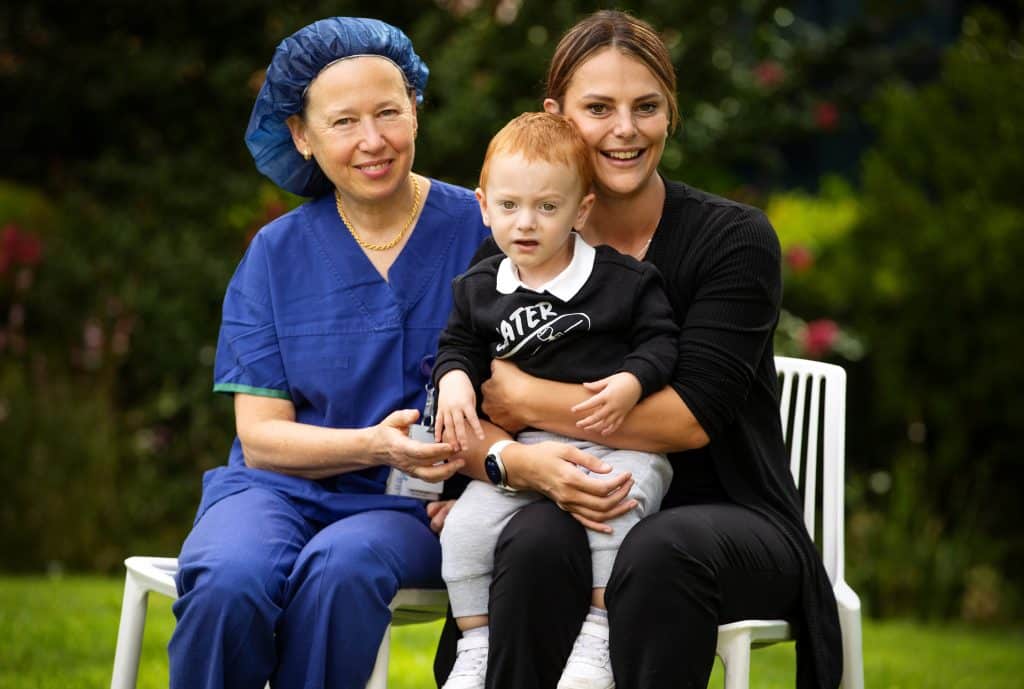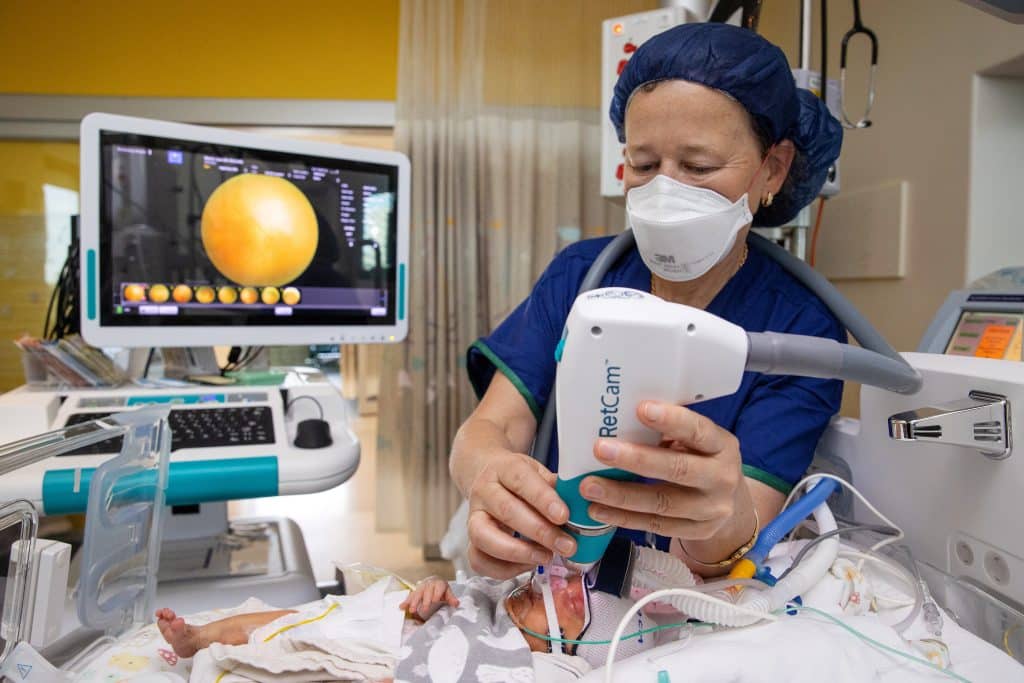Originally published in the Herald Sun, Friday 7 April
Words: Sarah Booth
Images: Mark Stewart
Ophthalmologist Associate Professor Susan Carden watched the toddler explore the garden around him, savouring the image of a little boy whose eyesight she saved. Every suspicious look at a passer-by or glance at his mum for reassurance was a tribute to her work at The Royal Children’s Hospital (RCH), and the life-changing impact technology funded by the Good Friday Appeal will have.
When Susan met Jordan Iacopino in the hospital’s neonatal intensive care unit, he was critically unwell, born at 24 weeks and at risk of blindness.
Susan said it was exciting – and slightly emotional – to watch a now two-year-old Jordan walking and seeing. “If there’s anything I’ve done in my life that’s worthwhile, it’s making these kids see,” she said.

Ophthalmologist Associate Professor Susan Carden reunites with patient Jordan and his mum, Tracey. Jordan’s condition was diagnosed and monitored through the RetCam device. Picture: Mark Stewart
It’s why Susan has been so passionate about the Good Friday Appeal.
The machine that saved Jordan’s eyesight has been approaching the end of its lifespan, so a part of this year’s funds have been earmarked to buy a replacement, ensuring the technology can continue to help thousands of patients.
Susan said she used a RetCam to photograph structures inside Jordan’s eyes, enabling her to diagnose and monitor his retinopathy of prematurity (ROP), severe forms of which can lead to blindness.
“It’s a time-dependent disease, so you have to watch it each week or two. Treatment can be either with an injection or a laser, depending on what the ROP looks like,” she said.
Mum Tracey Disantedicola said she could not speak more highly of Professor Carden, recalling the day she told her the ROP had started to slow and the injections were working.
“I remember saying to Susan ‘if we didn’t have Covid (restrictions), I could run at you and hug you’,” she said.
“If it wasn’t for Susan and all the equipment they have to help little guys like Jordan then we’d be telling a very different story today.”
At the other end of Jordan’s journey – but hoping to follow in his footsteps– is Luka Miocic, who was born premature at 25 weeks.

Associate Professor Susan Carden uses a RetCam provided by Good Friday Appeal funding on patient Luka. Picture: Mark Stewart
He calls the Butterfly Ward home for now and has his eyesight monitored by Susan. Before these machines, clinicians examined infants with a tool held up to the doctor’s own eyes, meaning only the doctor could see the results. But she said the RetCam meant anyone could see the results, from Luka’s parents to other specialists.
“Some of these vessels are starting to get a little bit curly,” she said, pointing to Luka’s scan.
“We can actually show Luka’s mum what’s going on; I can explain to the juniors so that they can learn.
“If I’m not here next week then whoever else is here can look (at today’s photos) to see if there’s development and if it’s getting worse or if it’s improving.
“It helps everyone from parents to staff.”
Luka’s mum Renee Miocic said it was reassuring to know he had access to specialised equipment, allowing the team to offer both preventive care and – if needed but rare with treatment – early diagnosis of low-vision.
“It helps to prepare you for what could be as well,” she said.